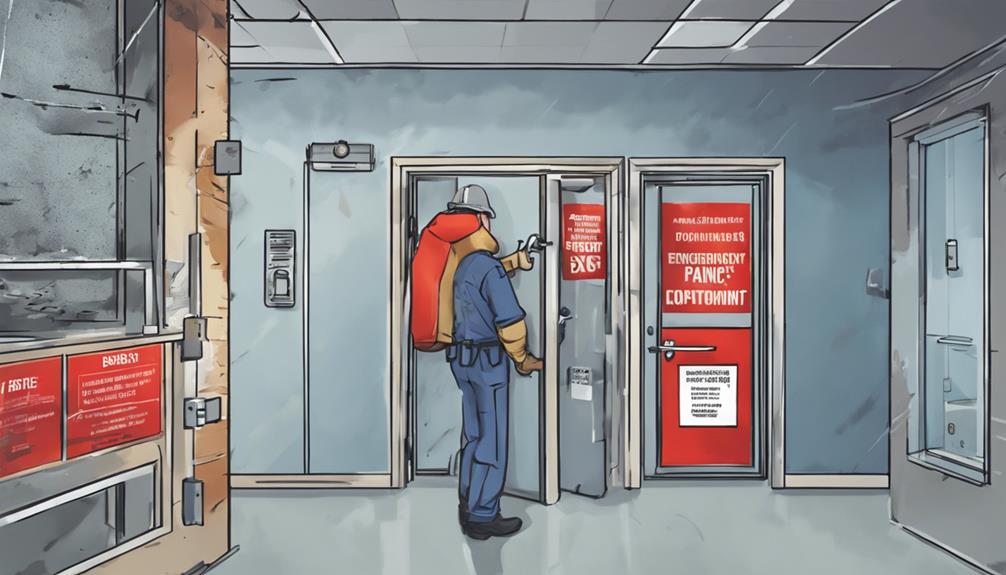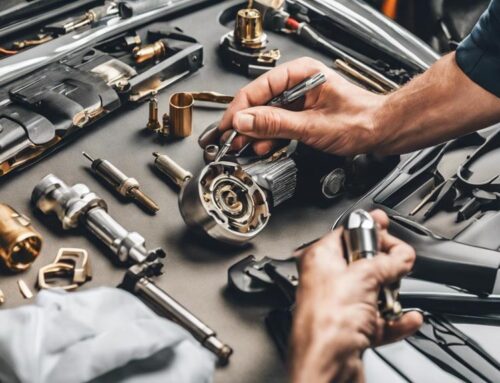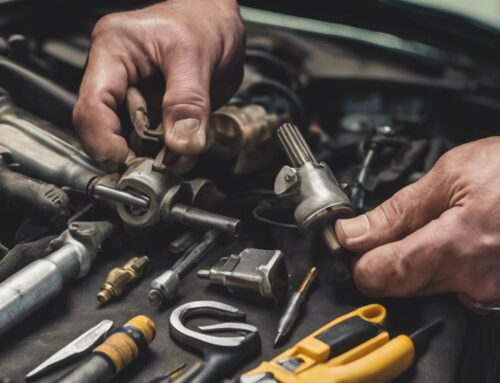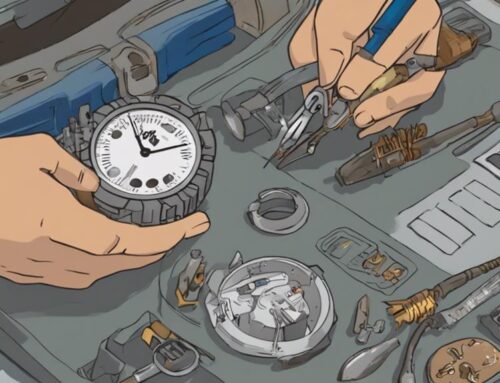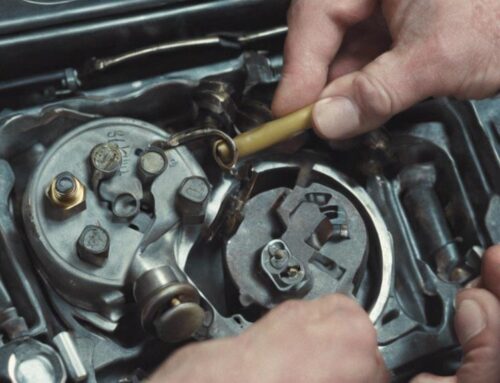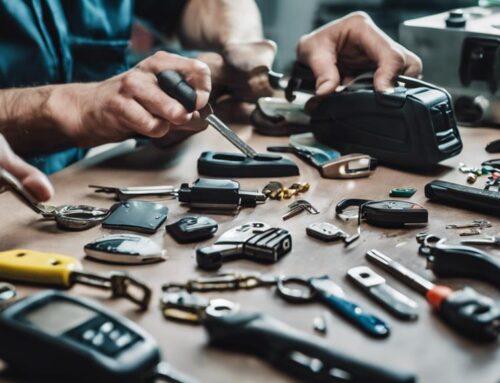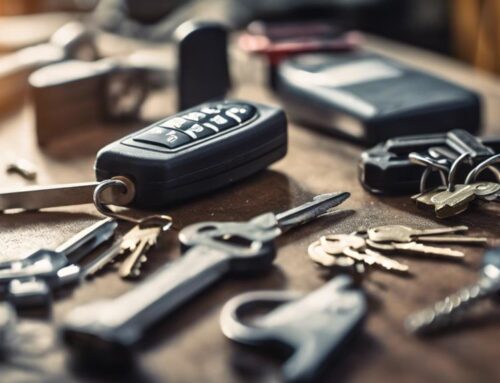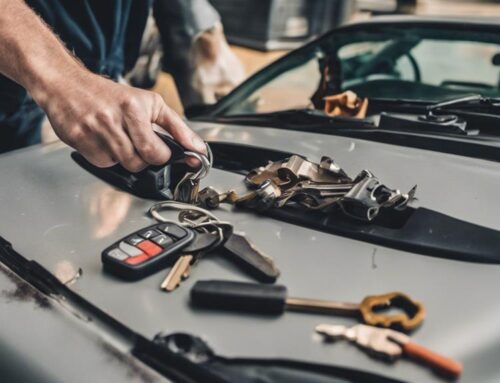When it comes to ensuring safety in commercial buildings, understanding the legal requirements for installing panic bars is essential. You need to take into account local building codes, fire safety regulations, and accessibility standards. But what about the role of a locksmith? Can they effectively repair or upgrade your existing panic bars to meet these standards? The answers might surprise you, especially when you realize how important these elements are to your business's security and compliance. So, what do you really need to know about panic bars and locksmith services?
Key Takeaways
- Panic bars must be installed on all designated emergency exits to comply with building codes and safety regulations.
- Legal requirements dictate that panic bars must allow easy, one-motion operation without keys or special knowledge for swift egress.
- Regular maintenance and inspections are essential to ensure panic bars function properly and remain compliant with fire safety standards.
- Certified locksmiths can repair, upgrade, and ensure the integrity and functionality of existing panic bars for enhanced safety.
- Professional locksmith services provide tailored solutions for panic bar installation and compliance with local accessibility standards.
Overview of Panic Bars
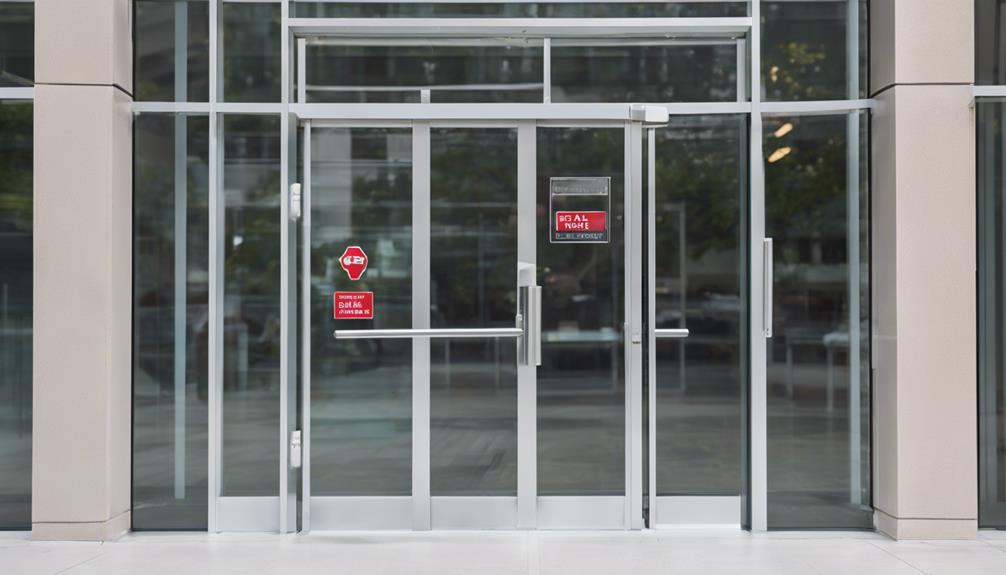
What do you need to know about panic bars? Understanding the various panic bar types is essential for ensuring safety and compliance in your establishment. Skilled technicians use precise methods for correct functionality, with regular maintenance extending the lifespan of exit devices. These devices, primarily used as emergency exits, come in different configurations—horizontal, vertical, and touchpad, each tailored for specific door types and traffic requirements. By selecting the appropriate type, you enhance both functionality and accessibility. Installation benefits extend beyond compliance; panic bars facilitate rapid egress, minimizing risks during emergencies. Their straightforward operation allows for quick release, even under pressure, ensuring that occupants can exit swiftly. Additionally, a properly installed panic bar system contributes to the overall security of your premises while maintaining a streamlined aesthetic. Prioritize these factors to optimize safety and efficiency in your facility.
Legal Requirements for Panic Bars
When installing panic bars, you must guarantee compliance with relevant building codes and accessibility standards. These regulations often dictate specific installation practices and performance requirements. Understanding these legal obligations is essential for maintaining safety and functionality in emergency situations.
Building Codes Compliance
How do building codes influence the installation of panic bars in commercial properties? Compliance with these codes is vital for guaranteeing that emergency exits function effectively during crises. You must adhere to specific regulations that dictate the installation, maintenance, and operation of panic bars, which serve as significant security measures. These codes typically require panic bars to be installed on all designated emergency exits, guaranteeing swift egress without delay. They also mandate that panic bars are easily operable, even in high-stress situations. Failure to comply can lead to severe penalties, including fines and increased liability in emergencies. Consequently, understanding and implementing these building codes is not just about legality; it's about safeguarding lives and assets in your commercial space. Additionally, it is important to evaluate the significance of routine maintenance services to guarantee that panic bars remain fully functional and compliant with regulations.
Accessibility Standards Required
While building codes set the groundwork for panic bar installation, accessibility standards add another layer of obligation, ensuring that all individuals, regardless of their physical capabilities, can safely exit a building in an emergency. Compliance with universal design principles is essential, as it mandates that panic bars are operable by anyone, including those with disabilities. Regular safety audits help identify non-compliance, ensuring facilities meet legal standards.
| Aspect | Requirement | Impact |
|---|---|---|
| Access for All | Panic bars must be accessible | Enhances safety and inclusivity |
| Operation | Must be easily operable | Reduces risk of injury during emergencies |
| Regular Audits | Conduct safety audits yearly | Maintains compliance and safety |
Building Codes and Compliance
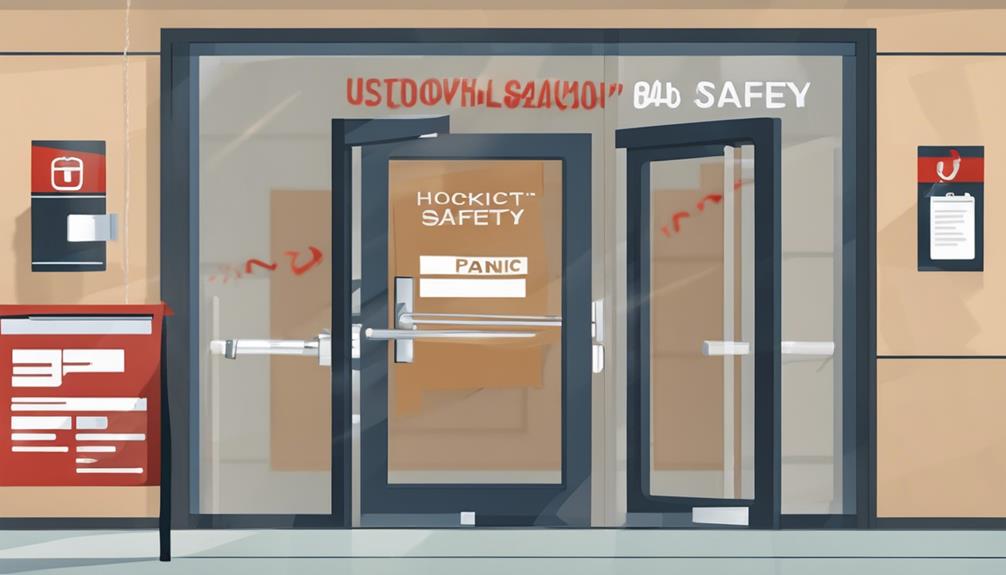
When installing panic bars, you must adhere to local building codes that dictate their design and functionality. Additionally, guarantee that your panic bars comply with accessibility standards to facilitate use by all individuals, including those with disabilities. Failing to meet these requirements can lead to legal repercussions and compromised safety.
Local Building Codes
Local building codes dictate the specific requirements for panic bars, guaranteeing they meet safety and accessibility standards in various facilities. These codes address local safety concerns, establishing equipment standards that panic bars must adhere to for emergency exits. As a property owner, you bear tenant responsibilities to install compliant panic bars, which also protect you from potential liability issues. Understand that installation costs can vary considerably based on local regulations and specific security measures required. Furthermore, regular maintenance schedules are vital to guarantee your panic bars function correctly under pressure. Familiarizing yourself with these codes not only enhances safety but also fortifies your legal standing in the event of an emergency. Stay proactive in compliance to safeguard your interests. Additionally, it is essential to prioritize the expertise of professionals in Panic and Push Bar Installation and Repair to guarantee compliance with building regulations and efficient functionality.
Accessibility Standards Compliance
Accessibility standards compliance is essential for guaranteeing that panic bars meet the needs of all individuals, particularly those with disabilities. You must adhere to regulations that enhance safety measures while facilitating effective emergency exits.
To guarantee compliance, consider the following guidelines:
- Panic bars should be operable with one hand.
- Install bars at an appropriate height for wheelchair users.
- Guarantee clear signage near emergency exits.
- Maintain unobstructed access to panic bars at all times.
- Regularly inspect and maintain the functionality of panic bars.
Fire Safety Regulations
Fire safety regulations mandate specific requirements for panic bars to guarantee swift and safe egress during emergencies. You must confirm that panic bars are installed on all designated emergency exits, allowing for immediate access without the need for a key or special knowledge. The bars should be easily operable with a single motion, confirming that individuals can escape quickly in high-stress situations. Compliance with the National Fire Protection Association (NFPA) standards is essential, as these guidelines dictate the size, placement, and function of panic bars. Regular inspections and maintenance are also necessary to uphold fire safety standards and confirm functionality. Ignoring these regulations can result in severe penalties and jeopardize the safety of occupants during emergencies.
Accessibility Standards
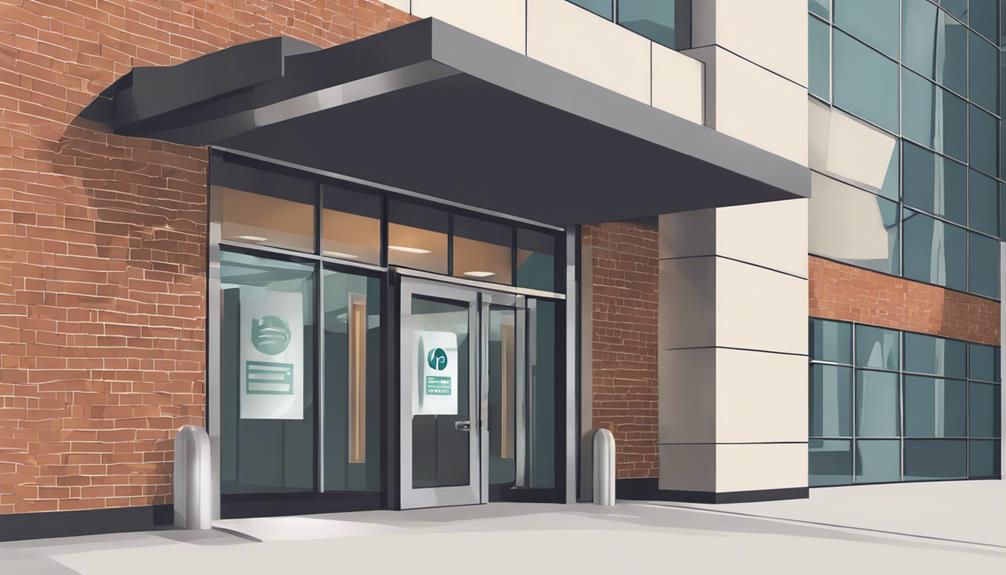
Guaranteeing compliance with accessibility standards is essential for panic bars installed in public buildings. Adhering to these standards not only fulfills legal obligations but also enhances safety for all occupants. Consider the following key points regarding panic bar types and installation guidelines:
- Panic bars must be operable with one hand.
- Installation height should accommodate individuals in wheelchairs.
- Panic bars should not require tight grasping, pinching, or twisting.
- Clear space around panic bars must be maintained for easy access.
- Regular maintenance checks are necessary to guarantee functionality.
Locksmiths and Panic Bar Services
When installing panic bars, it is crucial to contemplate the role of locksmiths who specialize in these safety devices. Certified locksmith services not only guarantee compliance with legal requirements but also assure the integrity and functionality of your panic bars. They possess the expertise to assess your existing systems, providing vital panic bar repair when needed. Guaranteeing proper installation and maintenance is critical for safety and regulatory adherence. A qualified locksmith can upgrade outdated panic bar systems, enhancing security and user accessibility. By engaging locksmith services, you empower your facility with the necessary safeguards against emergencies, meeting both legal standards and operational efficiency. The right locksmith is an invaluable partner in maintaining a secure environment for your commercial property. Additionally, locksmiths can offer advice on enhancing safety protocols and emergency exit procedures tailored to your specific business needs.
Low Rate Locksmith's Offerings
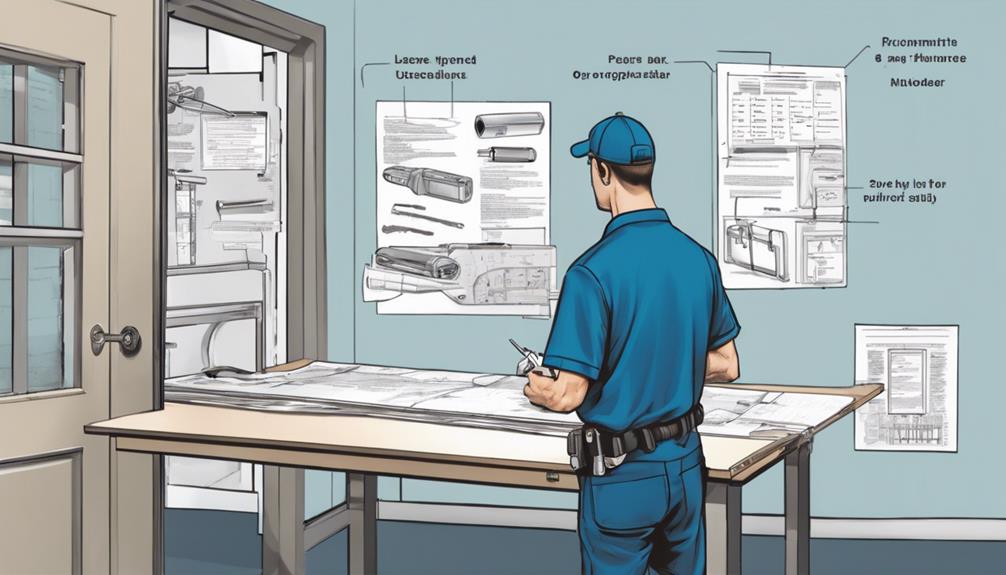
Low Rate Locksmith offers a range of services tailored to meet the specific needs of businesses requiring panic bar installations and maintenance. With a focus on compliance and security, you can trust low rate locksmiths to provide the highest quality panic bar services. Their offerings include affordable emergency exit solutions that guarantee safety compliance without financial strain, installation of panic bars that meet local safety codes, regular inspections to verify compliance with regulations, upgrades to enhance security features, repairs for malfunctioning panic bars, and consultation services to assess your building's safety needs.

